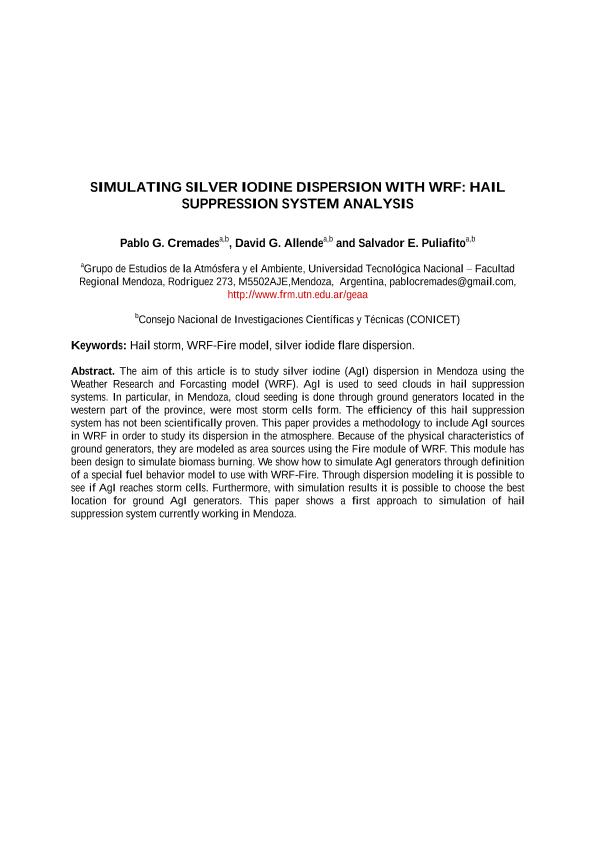Artículo
Simulating silver iodine dispersion with WRF: hail suppression system analysis
Fecha de publicación:
11/2013
Editorial:
Asociación Argentina de Mecánica Computacional
Revista:
Mecanica Computacional
ISSN:
1666-6070
Idioma:
Inglés
Tipo de recurso:
Artículo publicado
Clasificación temática:
Resumen
The aim of this article is to study silver iodine (AgI) dispersion in Mendoza using the Weather Research and Forcasting model (WRF). Crystalline structure of AgI is similar to that of ice, allowing it to induce freezing by a process known as heterogeneous nucleation. Therefore, AgI is used to seed clouds in hail suppression systems. In particular, in Mendoza, cloud seeding is done through ground generators located in the western part of the province, were most storm cells are formed. The efficiency of this system has not been scientifically proven. This paper provides a methodology to include AgI sources in WRF in order to study its dispersion in the atmosphere. Because of the physical characteristics of ground generators, they are modeled as area sources using the Fire module of WRF. This module has been design to simulate biomass burning. We show how to simulate AgI generators through definition of a special fuel behavior model to use with WRF-Fire.Thorough dispersion modeling it is possible to see if AgI reaches storm cells. Furthermore, with simulation results it is possible to choose the best location for ground AgI generators. This paper shows simulation results for the hail suppression system currently working in Mendoza and for other possible scenarios using different locations for ground generators and different number of them.
Palabras clave:
Hail Suppression
,
Wrf-Fire
Archivos asociados
Licencia
Identificadores
Colecciones
Articulos(CCT - MENDOZA)
Articulos de CTRO.CIENTIFICO TECNOL.CONICET - MENDOZA
Articulos de CTRO.CIENTIFICO TECNOL.CONICET - MENDOZA
Citación
Cremades, Pablo Gabriel; Allende, David Gabriel; Puliafito, Salvador Enrique; Simulating silver iodine dispersion with WRF: hail suppression system analysis; Asociación Argentina de Mecánica Computacional; Mecanica Computacional; 32; 33; 11-2013; 2741-2755
Compartir




